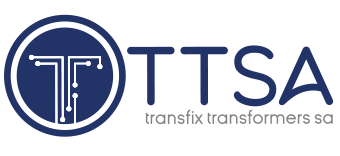After several delays since its launch in 2017, the $294-million Kariba Dam Rehabilitation Project (KDRP), aimed at repairing decades of erosion from high-velocity water discharge and refurbishing the dam’s spillway, is now largely complete, with remaining works due to wrap up by September next year. The project’s core components are the reshaping of the dam’s plunge pool, completed in September last year, and the refurbishment of all six sluices in the spillway, the first phase of which is now 99% complete, with finalisation expected before year-end. Phase II, which began in 2024, has progressed to the 26% completion mark, with overall works scheduled to conclude in just under a year.
South Africa’s transmission network, built for a centralised, coal-based power system, cannot carry the country into a decentralised, renewables-led future, says financial solutions provider Old Mutual Alternative Investments infrastructure debt head Rolf Canto and investment analyst Kabelo Mabaso. In a paper titled ‘Why transmission investment is the missing piece in South Africa’s energy transition’, they stress this, saying South Africa has outgrown its grid.
In continuing a two-part series of webinars on opportunities for digitalisation in South Africa’s energy sector, expert participant Siham Salie-Abrahams, representing advisory firm HKA Global, said digital asset management (DAM) will become invaluable as the country transitions to a more integrated and modern energy system. Broadly, digitalisation is the energy transition and critical to balancing supply and demand, as well as integrating renewables. “In the race for a sustainable future, digitalisation is our greatest ally,” added South Africa-German Energy Partnership secretariat Henrik Hartmann during the October 29 webinar.
South Africa’s public and private sectors involved in environmental regulations and electricity are working to develop an energy attribute certificate (EAC) system that would enable the verification, certification, tracking and transfer of organisations’ emissions-reduction efforts. The need is two-fold. The first is that accurate accounting of greenhouse-gas (GHG) emissions associated with electricity supply and consumption is increasingly being required globally and in South Africa.
The Department of Electricity and Energy has provided additional information about its proposal to repurpose the Integrated National Electrification Programme (INEP) to meet the country’s 2030 universal access commitment – one that would involve electrifying some 1.6-million households at an estimated cost of R75-billion. The grant-based INEP scheme was launched in 2001/2 and Eskom and municipalities have used the R110-billion allocated to the programme over the decades to electrify some 8.4-million households and increase the country’s electrification rate to over 94%.
Two years after its inaugural launch, Nordex Energy South Africa’s internship programme continues to build a pipeline of skilled technicians to service and manage wind farms. To date, 14 young engineers, with a minimum N4 qualification in electrical, mechanical or mechatronics disciplines, have been provided practical training opportunities aligned with the increasing demand for specialised skills within the wind industry.
The Department of Electricity and Energy has amended the request for proposal (RFP) documentation for the inaugural procurement of 2 000 MW of gas-to-power and has also announced an extension to the bid submission date to May 29 next year. The first bid window for the Gas Independent Power Producer Procurement Programme (GASIPPPP) was launched on December 14, 2023, with an initial deadline of August 30, 2024, which was subsequently extended to October 31, 2025.
The 97.5 MW Damlaagte solar PV facility, near Parys in the Free State, has been officially inaugurated, after having entered into commercial operation in August. The plant supplies renewable electricity to Sasol Secunda Operations and represents the first renewable-energy facility to come online under a joint agreement between Sasol and Air Liquide to procure 900 MW of renewables in support of their respective decarbonisation initiatives.
The latest edition of the South African Renewable Energy Grid Survey (SAREGS) has again confirmed that there is a strong and growing development pipeline of solar PV, wind, battery and hybrid projects across the country. The survey is conducted yearly by the National Transmission Company South Africa (NTCSA) in partnership with the South African Photovoltaic Industry Association and the South African Wind Energy Association.
State-owned utility Eskom says it is bolstering efforts to eliminate load reduction by 2027 as South Africa’s electricity system stabilises. The Load Reduction Elimination Strategy, launched by Electricity and Energy Minister Dr Kgosientsho Ramokgopa on September 25, sets a roadmap to strengthen the country’s distribution network and address high-risk isolated areas.
INDUSTRY NEWS
- NERSA appoints Electricity Market Advisory Forum to guide power-market reformDecember 19, 2025 - 2:04 pm
- Eskom offers more details on envisaged roles of the NTCSA and the TSODecember 18, 2025 - 11:04 am
- NTCSA says any electricity deal to salvage Mozal must ensure its financial sustainabilityDecember 17, 2025 - 3:01 pm
WHERE TO FIND US
Address
9 Yellow Street
Botshabelo Industrial Area
Botshabelo, Free State
Call / Email Us
Tel: +27 (0) 61 956 6772
Email: info@transfix.co.za
